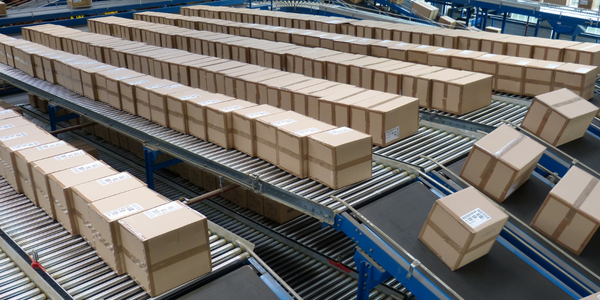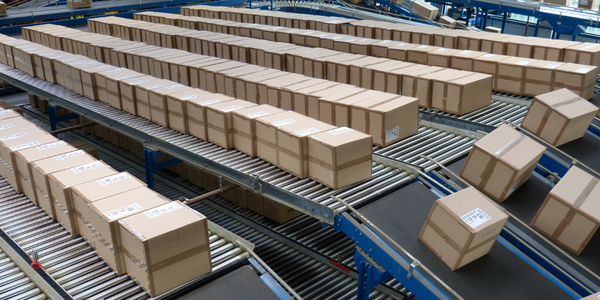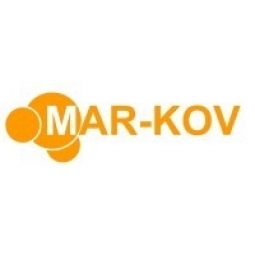Technology Category
- Functional Applications - Inventory Management Systems
- Sensors - Barcode Readers
Applicable Industries
- Packaging
- Retail
Applicable Functions
- Facility Management
- Warehouse & Inventory Management
Use Cases
- Inventory Management
- Picking, Sorting & Positioning
Services
- System Integration
About The Customer
Sweet Jubilee Gourmet is a boutique chocolate product manufacturer that offers its products to consumers and high-end retailers. The company uses enrobers to coat confections in chocolate and decorates them with other toppings, as well as complex decorative packaging. As the company expanded, it aimed to excel in its SQF audits and attract larger retail customers. However, it faced challenges in lot traceability and inventory management, which were crucial for its growth and customer satisfaction. Sweet Jubilee was ready for a change and sought a solution that could modernize its process and facilitate its growth.
The Challenge
Sweet Jubilee Gourmet, a boutique chocolate product manufacturer, was facing challenges in managing its rapid expansion and meeting the requirements of new national retail customers. The company was struggling with lot traceability, a crucial factor for succeeding in Safe Quality Food (SQF) audits. Their traditional pencil-and-paper method was proving to be time-consuming, error-prone, and inadequate for the speed and accuracy required in a recall situation. Additionally, Sweet Jubilee was having difficulty tracking their existing inventory levels and planning for their production runs. With hundreds of products and ingredients, they were experiencing stock outs, where a key ingredient or packaging component was unavailable on the production day. This was hindering their ability to plan for large order runs for larger customers and ensure timely and consistent delivery.
The Solution
Sweet Jubilee approached Mar-Kov to implement Inventory, Manufacturing Execution System (MES), and Material Requirements Planning (MRP) software. Mar-Kov's food manufacturing software met all the functional requirements, providing a feature-rich application and a strong project support team. A key step in the project was an onsite visit by Mar-Kov’s project manager to Sweet Jubilee’s production facility. This visit helped in understanding the operation in greater detail and developing a project plan. One of the challenges that the site visit helped overcome was the complexity of their Bill of Materials (BOM). Mar-Kov’s project team helped map out this complex production hierarchy into a well-organized structure. A key technical feature that allowed Sweet Jubilee to meet its objectives was barcode scanning of all ingredients and components into the production process, and further scanning of product lots as they went out the door. This not only streamlined production but also ensured that each recipe and bill of materials was followed as per requirements.
Operational Impact
Quantitative Benefit

Case Study missing?
Start adding your own!
Register with your work email and create a new case study profile for your business.
Related Case Studies.

Case Study
Improving Production Line Efficiency with Ethernet Micro RTU Controller
Moxa was asked to provide a connectivity solution for one of the world's leading cosmetics companies. This multinational corporation, with retail presence in 130 countries, 23 global braches, and over 66,000 employees, sought to improve the efficiency of their production process by migrating from manual monitoring to an automatic productivity monitoring system. The production line was being monitored by ABB Real-TPI, a factory information system that offers data collection and analysis to improve plant efficiency. Due to software limitations, the customer needed an OPC server and a corresponding I/O solution to collect data from additional sensor devices for the Real-TPI system. The goal is to enable the factory information system to more thoroughly collect data from every corner of the production line. This will improve its ability to measure Overall Equipment Effectiveness (OEE) and translate into increased production efficiencies. System Requirements • Instant status updates while still consuming minimal bandwidth to relieve strain on limited factory networks • Interoperable with ABB Real-TPI • Small form factor appropriate for deployment where space is scarce • Remote software management and configuration to simplify operations

Case Study
Digital Retail Security Solutions
Sennco wanted to help its retail customers increase sales and profits by developing an innovative alarm system as opposed to conventional connected alarms that are permanently tethered to display products. These traditional security systems were cumbersome and intrusive to the customer shopping experience. Additionally, they provided no useful data or analytics.

Case Study
How Sirqul’s IoT Platform is Crafting Carrefour’s New In-Store Experiences
Carrefour Taiwan’s goal is to be completely digital by end of 2018. Out-dated manual methods for analysis and assumptions limited Carrefour’s ability to change the customer experience and were void of real-time decision-making capabilities. Rather than relying solely on sales data, assumptions, and disparate systems, Carrefour Taiwan’s CEO led an initiative to find a connected IoT solution that could give the team the ability to make real-time changes and more informed decisions. Prior to implementing, Carrefour struggled to address their conversion rates and did not have the proper insights into the customer decision-making process nor how to make an immediate impact without losing customer confidence.

Case Study
IoT Data Analytics Case Study - Packaging Films Manufacturer
The company manufactures packaging films on made to order or configure to order basis. Every order has a different set of requirements from the product characteristics perspective and hence requires machine’s settings to be adjusted accordingly. If the film quality does not meet the required standards, the degraded quality impacts customer delivery causes customer dissatisfaction and results in lower margins. The biggest challenge was to identify the real root cause and devise a remedy for that.

Case Study
Zenon the Ideal Basis for An Ergonomic HMI
KHS develops and produces machines and equipment for filling and packaging in the drinks industry. Because drinks manufacturing, filling and packaging consist of a number of highly complex processes, the user-friendly and intuitive operation of equipment is increasingly gaining in significance. In order to design these processes as simple as possible for the user, KHS decided to introduce a uniform, transparent and standardized solution to the company. The HMI interface should meet the requirement for people with different qualifications and enable them to work on a standard platform.








